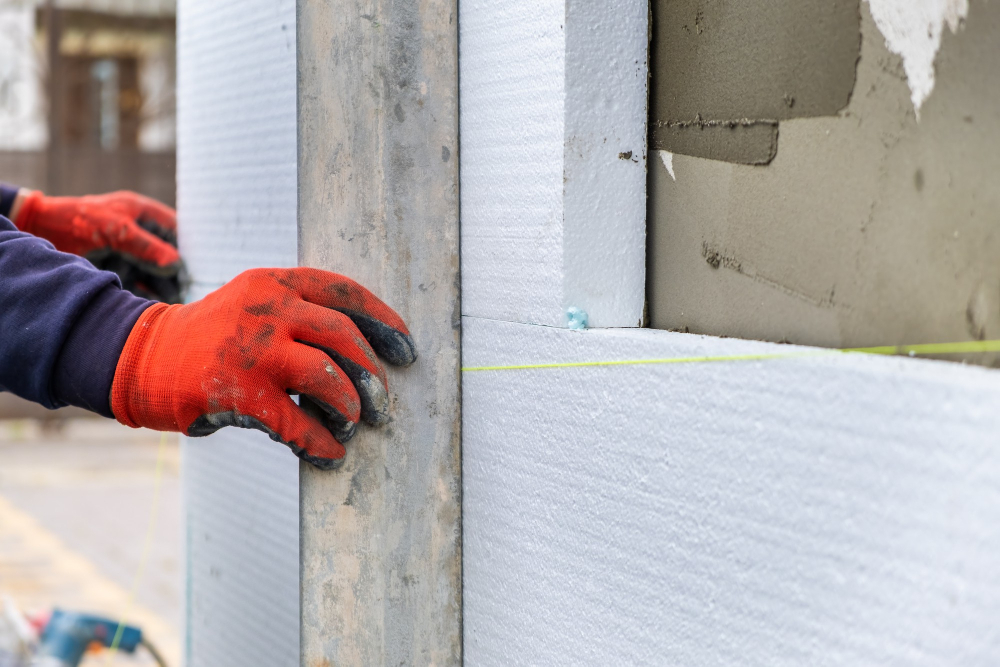House insulation with styrofoam
As we have already mentioned, styrofoam is the most common thermal insulation material. Usually it is used in the insulation of external double-layer walls.
How to insulate a house with styrofoam? The light wet method is the most popular. In the first stage of work, the adhesive mortar is prepared. Its task will be to connect the polystyrene with the wall. The boards are attached to vertical surfaces and additionally reinforced with mounting pins. In the next stage, the reinforcing mesh is submerged. The last step is to apply the facade plaster, which plays a decorative and protective role.
The facade insulation system with styrofoam (light wet method) should be performed at positive temperatures. The condition is also the lack of precipitation during the application of glue and plaster. Strong sunlight, which may excessively accelerate the drying of the adhesive mortar, will also prove to be a difficulty. The insulation can also be made using the dry method (excluding water-soluble mortars). In this case, there are no significant atmospheric restrictions.
Insulating external walls with styrofoam is relatively easy. However, the problem may be the large amount of granulate that falls off when cutting the boards and the resulting littering of the building environment with white “balls”. Efficient thermal insulation turns out to be a big advantage of this solution. Styrofoam is also resistant to moisture and protects walls against excessive moisture. Due to its technical parameters, it does not allow for wall ventilation, so it is not the best solution in the construction of wooden houses.
Styrofoam – the advantages
One of the most common methods of isolating the interior of the house from the external conditions is applying a thick layer of polystyrene to its external walls, i.e. properly prepared, expanded polystyrene. These interconnected small granules are used to form plates of various thickness and sizes, with the following advantages:
- high resistance to moisture, and the styrofoam board dries quickly even when wet;
- good thermal insulation coefficient, although slightly less acoustic;
- universal application, not only to insulate walls or roofs, but also foundations, and even the aforementioned concrete septic tank, thus protecting it against freezing.
Styrofoam is also easy to lay, especially in the so-called the light wet method, and its relatively low weight does not cause a dangerous excessive load on the building structure, especially its load-bearing elements.
WALL INSULATION TECHNOLOGY IS IN A BRIEF:
- assessment of the evenness, technical condition and method of wall finishing,
- preparation of the substrate (cleaning, filling cavities, priming),
- sticking expanded polystyrene boards (using the band-circumferential method, not “for pancakes”!) In layers, using the shifting of the boards in individual layers relative to each other,
- leveling the plane by grinding the surface of the glued boards,
- if necessary – additional mechanical fastening (plastic pins for polystyrene), 2 pieces per square meter,
- stretching the glue and embedding the concealed fiberglass mesh in it. The mesh should be submerged with overlaps in relation to the subsequent applied stripes,
- applying a plaster base,
- applying a thin-layer plaster, by hand or by spraying.

